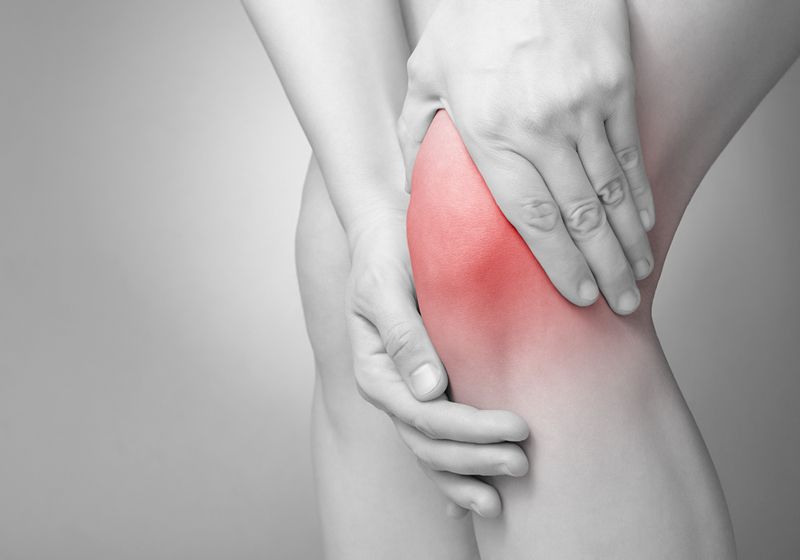By tying faulty autophagy to altered ion channel activity in amygdala neurons, researchers uncovered how disrupted cellular recycling could drive chronic pain.
Pain is essential to survival: It signals injury and modifies an animal’s behavior to promote healing, dying down once the danger passes. But sometimes, this biological alarm fails to switch off, lingering indefinitely after the pain-causing stimulus is gone. Scientists have been studying the mechanisms that drive pain for many decades, yet most treatments target symptoms rather than the underlying cause, often accompanied by side effects.
Shashank Dravid is a neuropharmacologist at Texas A&M University who examines the role of glutamate receptors in chronic pain.
Shashank Dravid
“Severe forms of chronic pain require opioids and other drugs that have addictive effects, leading to the opioid epidemic in the United States,” said Shashank Dravid, a neuropharmacologist at Texas A&M University.
A common finding that has emerged from labs across the world is the relationship between neuronal excitability—the tendency of a neuron to fire in response to a stimulus—and pain behaviors.1 One of the key factors that modulates this property of neurons is the type and distribution of ion channels present on their membranes. However, scientists are still trying to uncover the molecular and cellular processes that cause a pain-signaling neuron to function aberrantly.
Now, in a new study, Dravid and his team reported that an impairment in neurons’ autophagic flux—a degradation process that cells use to maintain internal homeostasis—can modify the cells’ activity patterns, driving both acute and chronic pain.2 These findings, published in Autophagy, lay the foundation for the development of new and improved pain treatments.
“This is totally new and very exciting,” said Alexander Binshtok, a pain neurobiologist at the Hebrew University of Jerusalem. “Autophagy has been shown to be responsible for many other processes, like autism. But I’ve never come across a study blaming autophagy for pain.”
Dravid and his team previously showed that the glutamate receptor GluD1 is downregulated in the central amygdala region of the mouse brain in both acute and chronic pain.3 Subsequently, the researchers discovered that loss of GluD1 impairs autophagy across multiple regions of the mouse brain.
Since autophagy plays a critical role in recycling membrane ion channels, Dravid and his team hypothesized that chronic pain-induced GluD1 downregulation would disrupt autophagy, consequently altering the density of ion channels. This would eventually increase neuronal excitability.
To test their theory, the researchers induced inflammatory/acute and neuropathic/chronic pain in mouse models. They isolated synaptic structures from the central amygdala of these animals and analyzed the levels of GluD1, its receptor cerebellin-1, and subunits of an excitatory receptor. In both pain conditions, the team observed reduced levels of GluD1 and its receptor and elevated levels of the excitatory receptor subunits as compared to controls. This change translated to higher neuronal excitability in the animals that experienced pain.
Next, Dravid and his team examined if the low levels of GluD1 affected autophagy in the amygdala neurons. In both acute and chronic pain, the researchers observed elevated levels of key autophagic target proteins, indicating a disruption of the waste-removal process.
Dravid’s group had previously shown that injecting recombinant cerebellin-1 into the central amygdala can rescue the levels of GluD1 in both acute and chronic mouse models.3 They used the same intervention to test the relationship between GluD1, autophagy, and pain. Administration of recombinant cerebellin-1 to mice experiencing chronic pain normalized their levels of GluD1, autophagy, and excitatory receptor subunits, in addition to alleviating pain.
“We didn’t expect that cerebellin-1 would work intravenously,” Dravid said. “It’s a pretty large molecule; we still don’t understand how it’s getting through the blood-brain barrier and producing its effect.”

Kishore Narasimhan is a neuroscientist at Texas A&M University who studies mechanisms underlying neurological disorders.
Kishore Narasimhan
Dravid believes that cerebellin-1 could potentially be used as a biomarker for pain. “It’s a protein that is secreted and gets into the [cerebrospinal fluid]. You could measure the levels and maybe it can help you identify whether specific type of treatment may be beneficial for that patient,” he said.
The team is now working on translating these findings to therapies. “We are going to test if peptide inhibitors of [GluD1] signaling combat pain in animals, and then move on clinical trials,” said Kishore Narasimhan, a neuroscientist in Dravid’s group and coauthor of the study.
However, Binshtok believes that the ubiquitous nature of autophagy could lead to some undesired effect of any treatment that modulates its levels. Despite the challenge, he thinks it’s worth pursuing. “It opens up a lot of very, very interesting avenues in research for any kind of disease that involves hyper stability,” he said.

